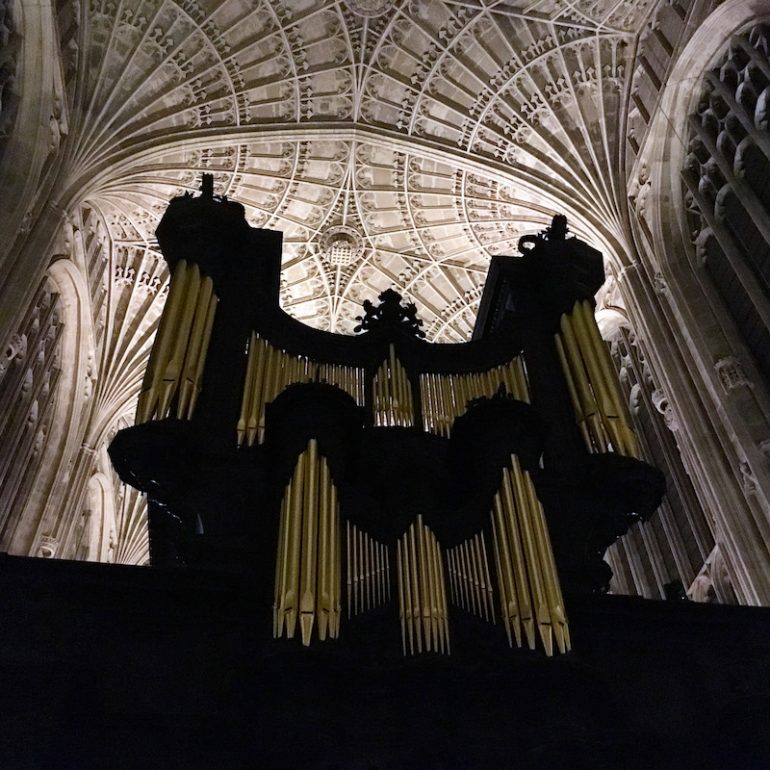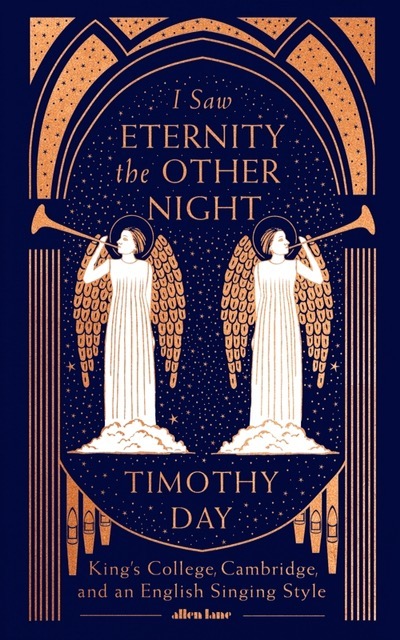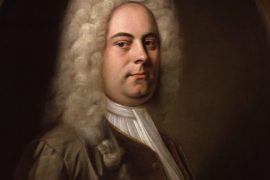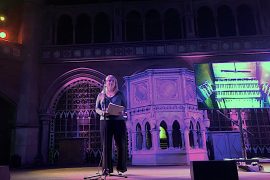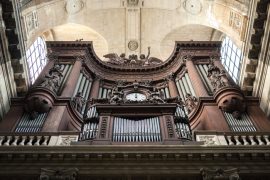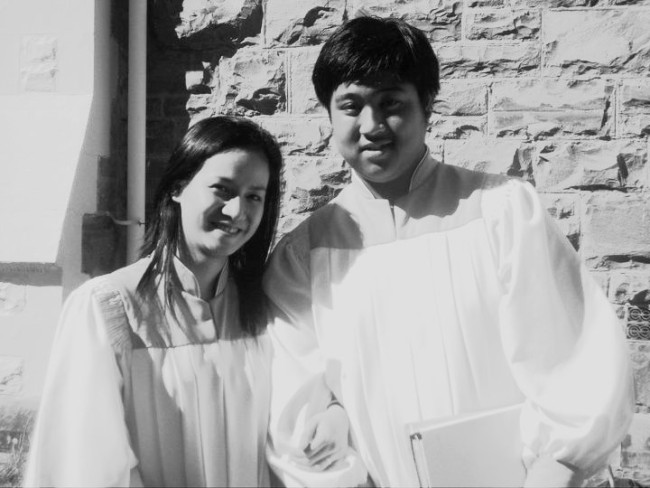What do you expect if you’re invited to a friend’s book launch? A glass or two of warm chardonnay, some nibbles, and a few nice thank you speeches perhaps, in a pleasant pub near the publisher’s head office?
Well, publishers Allen Lane upped the ante when they launched Timothy Day’s new book, I Saw Eternity the Other Night – King’s College, Cambridge and an English Singing Style, last month.
We were invited to Cambridge – to King’s College Chapel, indeed. Always a treat to enter this space, particularly as Evensong is ending, with the Harrison & Harrison organ hanging like a bat in the gathering gloom of a November evening. Timothy Day then dazzled us with a tour de force narration around the subject of his book – the history of the English cathedral and college singing style. And in attendance to illustrate his points were, gulp, the Choir of King’s College, with Stephen Cleobury and two Organ Scholars, who gave us Gibbons, Purcell, and Howells, ending with Vaughan Williams’ Let all the world in every corner sing. They performed as is now expected – expressively without being sentimental; and with a professionalism that never crosses the line from liturgical to secular values. And this is the theme of Timothy Day’s book – how did they come to sing like this?
Forget some romantic notion of centuries of Cathedral and Collegiate be-ruffed choirboys. Contrary to popular opinion, this English singing style, as epitomised by King’s, is not in a long line of inheritance from the Middle Ages. In fact, right from when records began, the English cathedral sound was observed to be “terribly rough”, and Day gleefully piles up the evidence as to why.
The book carries his many years of research and scholarship lightly – he never sneers but allows his cast of characters to condemn themselves out of their own mouths when required. Poor lay clerks: Day tracks their coarse tone and slovenly habits, their lowly status, their refusal to retire (because they needed the money) through the centuries, until they were finally ousted by the introduction of adult choral scholars. Poor Organists and Directors of Music: making the most of what they had, undervalued by their foundations, fighting the prevailing attitude that music was a superficial occupation, a sissy profession (if it could be called a profession at all) – a notion which persisted well into the 20th century. Poor Walter Parratt: whose choir at York Minster was caught out by BBC microphones, their broadcast evening services during the war causing a few raised eyebrows at Broadcasting House.
It was this scrutiny of the microphone that finally exposed the foot-dragging and lack of collective will for reform of musical standards in cathedrals and churches. But by this time a few determined men – A H Mann, Milner-White, Ord and finally Willcocks – had created a new sound, which “entered the consciousness of the English as no other choir had ever done,” as it was broadcast from King’s College, Cambridge, during and after the Second World War.
In this summary I can’t do justice to Day’s attention to fascinating detail along with the broad historical sweep. He observes the nuances of how this new singing style was inherited and disseminated: at Magdalen under Rose, Christ Church under Preston, and under Willcocks’ successors (including Stephen Cleobury). He describes how this sound began to have a secular market value by the 1970s – with the rise of Early Music scholarship, singers for whom this way of singing was second nature took to the concert platform as The King’s Singers, The Clerkes of Oxenford, The Sixteen, and many amateur and semi-professional imitators. Day takes his discussion right through the hoo-hah over women and girls in cathedral choirs, ending with thoughts on the popularity of sacred music performance in an age of increasing unbelief.
So, not just because it was written by a friend, but because it is a jolly good read, I recommend this as an essential Christmas book for anyone who has ever expressed an opinion about English choral singing – and let’s face it, most of us have. Publication has been neatly timed for the 90th anniversary of A Festival of Nine Lessons and Carols, which will be broadcast live from King’s on Christmas Eve, and the 60th anniversary of the televised Carols from King’s, broadcast on BBC2.
I SAW ETERNITY THE OTHER NIGHT
King’s College, Cambridge and an English Singing Style
Timothy Day
Allen Lane, £25 hardback
ISBN 9780241352182
TIMOTHY DAY was for many years Curator of Western Art Music in the British Library’s Sound archive. He has written and lectured widely on English cathedral music, was a visiting senior research fellow at King’s College, London 2006-11, and served on the Management Committee of the Research Centre for the History and Analysis of Recorded Music. For his work on this book he was awarded a Leverhulme Research Fellowship. His previous books include A Century of Recorded Music: Listening to Musical History and Hereford Choral Society: An Unfinished History.

